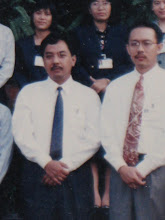

A tsunami wave train that is caused by the displacement of a large volume of a body of water , such as an ocean. The original Japanese term literally translates as "harbor wave." Tsunamis are a frequent occurrence in Japan; approximately 195 events have been recorded. Due to the immense volumes of water and energy involved, tsunamis can devastate coastal regions. Casualties can be high because the waves move faster than humans can run.
Earthquakes, volcanic eruptions and other underwater explosions (detonations of nuclear devices at sea), landslides and other mass movements, bolide impacts, and other disturbances above or below water all have the potential to generate a tsunami.
The Greek historian Thucydides was the first to relate tsunami to submarine earthquakes, but understanding of tsunami's nature remained slim until the 20th century and is the subject of ongoing research.
Many early geological, geographical, and oceanographic texts refer to tsunamis as "seismic sea waves."
Some meteorological conditions, such as deep depressions that cause tropical cyclones, can generate a storm surge called a meteotsunami, which can raise tides several metres above normal levels. The displacement comes from low atmospheric pressure within the centre of the depression. As these storm surges reach shore, they may resemble (though are not) tsunamis, inundating vast areas of land. Such a storm surge inundated Burma (Myanmar) in May 2008
On 26th December 2004 at 00:58:54 UTC, an undersea earthquake occurred with its epicentre off the west coast of Sumatra, Indonesia. The energy it released was equivalent to around 475,000 tons (475 kilotons) of TNT explosive.
The entire planet Earth vibrated as much as 1cm, with other earthquakes being triggered over the globe, as far as Alaska.
The overall death toll reached over a staggering 225,000 people, plus more than 500,000 injured, from eleven different countries- parents, siblings, brothers and sisters were lost.
Indonesia, Thailand, Sri Lanka and India were the worst hit.
On top of this, up to 5 million lost their homes or access to food and water, 1 million were left without the means to make a living.
The disaster triggered a worldwide humanitarian response, with more than $7 billion in humanitarian aid being donated.
The recovery process is those parts worst hit still continues in placesThe Asian tsunami of December 26th, 2004 was undoubtedly one of the worst disasters in history.
A tsunami can be generated when convergent or destructive plate boundaries abruptly move and vertically displace the overlying water. It is very unlikely that they can form at divergent (constructive) or conservative plate boundaries. This is because constructive or conservative boundaries do not generally disturb the vertical displacement of the water column. Subduction zone related earthquakes generate the majority of all tsunamis.
Tsunamis have a small amplitude (wave height) offshore, and a very long wavelength (often hundreds of kilometers long), which is why they generally pass unnoticed at sea, forming only a slight swell usually about 300 millimetres (12 in) above the normal sea surface. They grow in height when they reach shallower water, in a wave shoaling process described below. A tsunami can occur in any tidal state and even at low tide can still inundate coastal areas.
On April 1, 1946, a magnitude-7.8 (Richter Scale) earthquake occurred near the Aleutia Islands, Alaska It generated a tsunami which inundated Hilo on the island of Hawai'i with a 14 metres (46 ft) high surge. The area where the earthquake occurred is where the Pacific Ocean floor is subducting (or being pushed downwards) under Alaska.
Examples of tsunami at locations away from convergent boundaries include Storegga about 8,000 years ago, Grand Banks 1929, Papua New Guinea 1998 (Tappin, 2001). The Grand Banks and Papua New Guinea tsunamis came from earthquakes which destabilized sediments, causing them to flow into the ocean and generate a tsunami. They dissipated before traveling transoceanic distances.
The cause of the Storegga sediment failure is unknown. Possibilities include an overloading of the sediments, an earthquake or a release of gas hydrates (methane etc.)
The 1960 Valdivia earthquake (Mw 9.5) (19:11 hrs UTC), 1964 Alaska earthquake (Mw 9.2), and 2004 Indian Ocean earthquake (Mw 9.2) (00:58:53 UTC) are recent examples of powerful megathrust earthquakes that generated tsunamis (known as teletsunamis that can cross entire oceans. Smaller (Mw 4.2) earthquakes in Japan can trigger tsunamis (called local and regional tsunamis) that can only devastate nearby coasts, but can do so in only a few minutes.
In the 1950s, it was hypothesised that larger tsunamis than had previously been believed possible may be caused by landslides, explosive volcanic eruptions (e.g., Santorini and Krakatau), and impact events when they contact water. These phenomena rapidly displace large water volumes, as energy from falling debris or expansion transfers to the water at a rate faster than the water can absorb. The media dub them megatsunami.
Tsunamis caused by these mechanisms, unlike the trans-oceanic tsunami, may dissipate quickly and rarely affect distant coastlines due to the small sea area affected. These events can give rise to much larger local shock waves (solitons), such as the landslide at the head of Lituya Bay 1958, which produced a wave with an initial surge estimated at 524 metres (1,720 ft). However, an extremely large landslide might generate a megatsunami that can travel trans-oceanic distances, although there is no geological evidence to support this hypothesis.
Source : Various Source
GEOGLOBE
Sunday, October 25, 2009
Tsunami Disaster
Subscribe to:
Comments (Atom)







